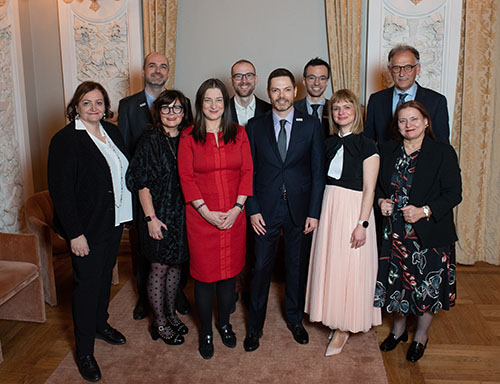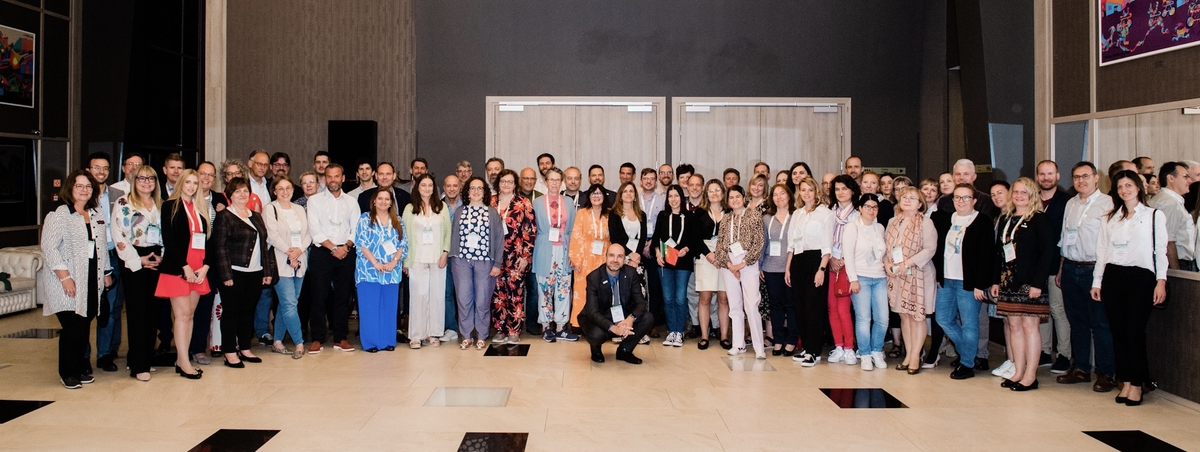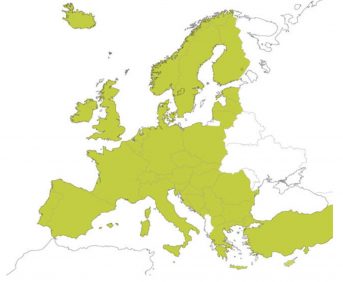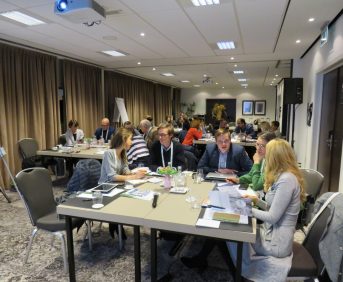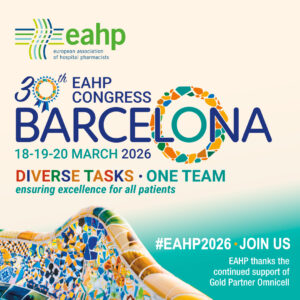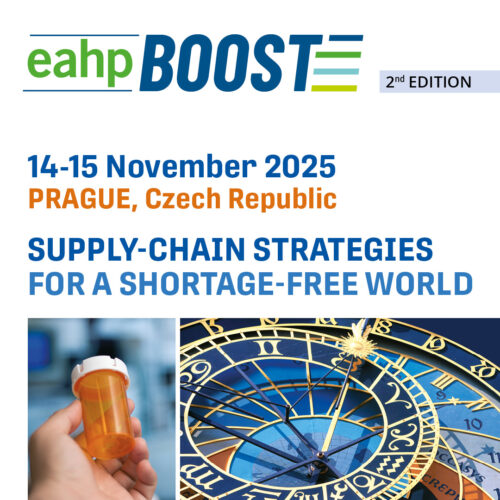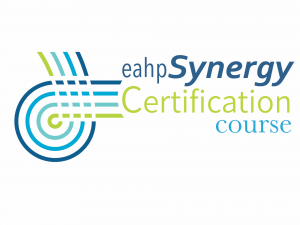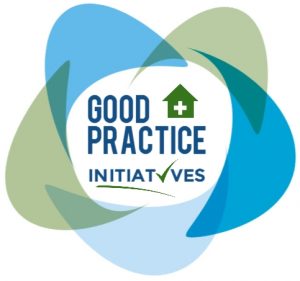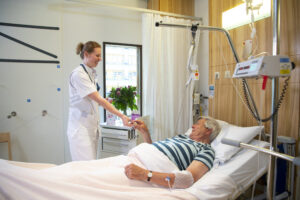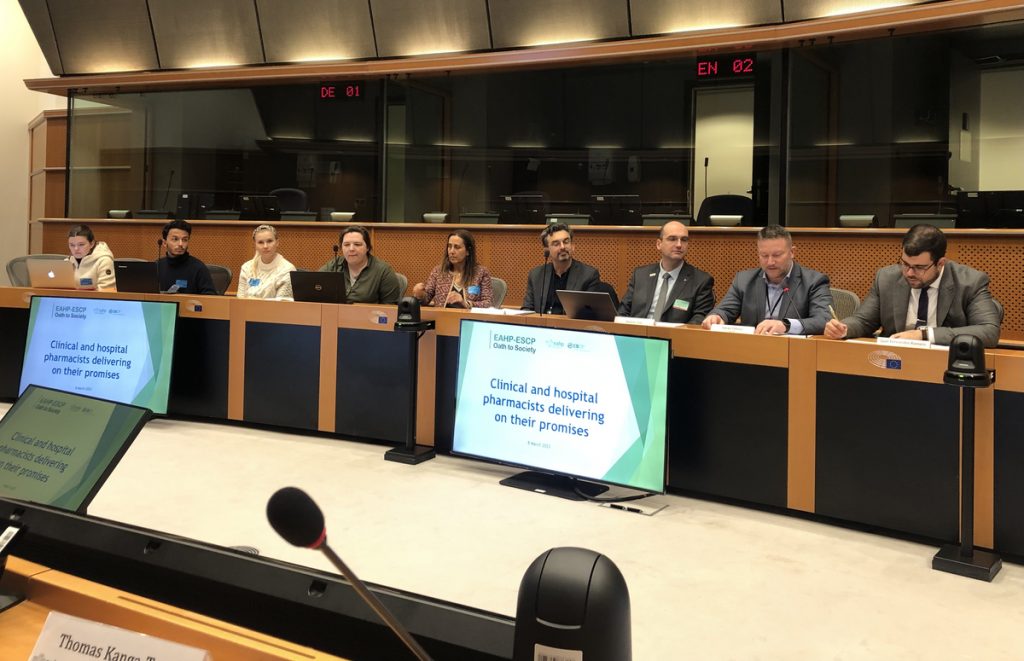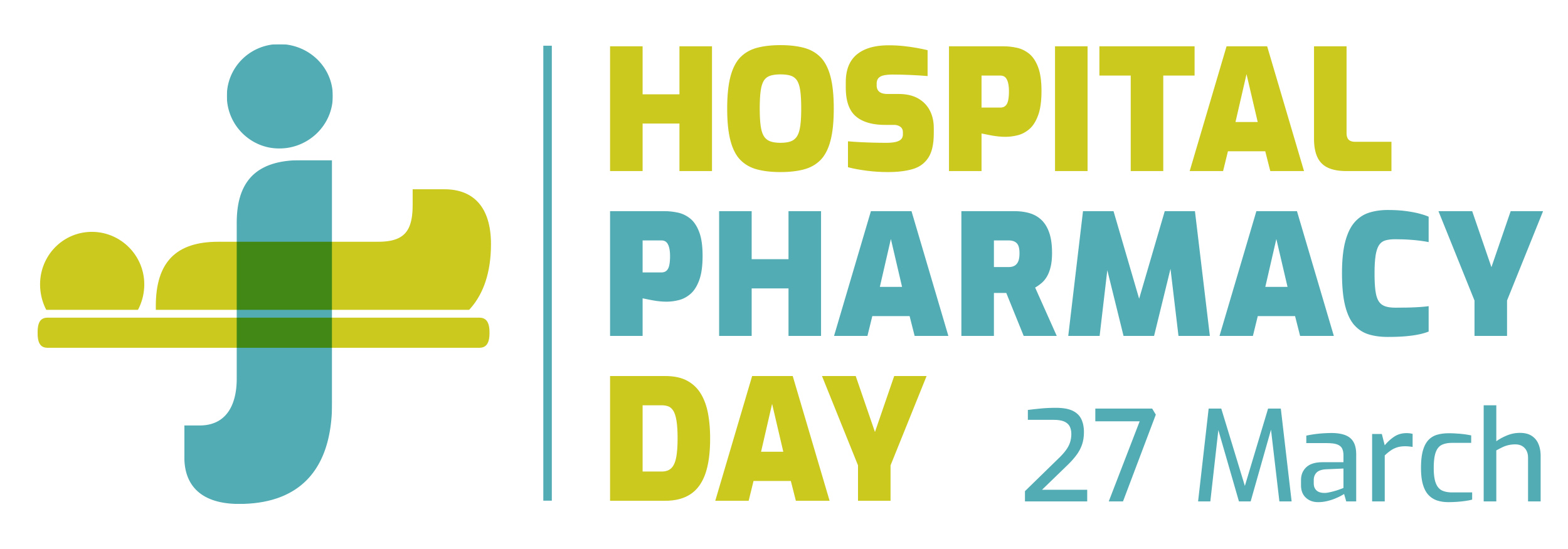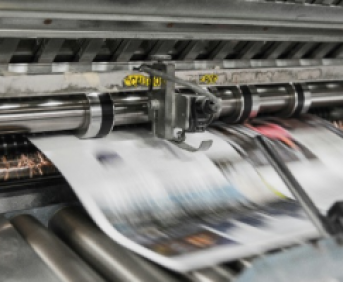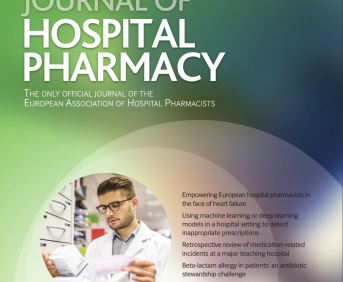COST SAVINGS ASSOCIATED WITH EMICIZUMAB REPACKAGING IN PEDIATRIC PATIENTS WITH HEMOPHILIA A
Pdf

European Statement
Production and Compounding
Author(s)
Saldaña Soria Raquel, Florit Sánchez María, Yunquera Romero Lucía, Fernández Martín Jesús, Gallego Fernández Carmen, Tortajada Goitia Begoña
Why was it done?
The aim of this protocol is to evaluate and quantify the cost saving of the optimisation of the use of emicizumab vials through repackaging into syringe under aseptic conditions.
What was done?
Emicizumab is indicated for routine prophylaxis of bleeding episodes in patients with hemophilia A. This drug has a significant economic impact, so it has been decided to initiate a protocol for the use of emicizumab in which it has been established to group patients and dispense pre-filled syringes of repackaged emicizumab for each patient, dividing the vials according to the patient’s dose in the syringes as a savings strategy.
How was it done?
Two male patients, aged 4 and 5 years, with hemophilia A, have been treated with emicizumab in our hospital from February 2022 to September 2024. A protocol was implemented consisting of dispensing repackaged pre-filled syringes of emicizumab (expiry date 7 days according to the Good Practice Guide for the preparation of medicines) to each patient, grouping the patients receiving treatment with emicizumab on the same day for dispensing and dividing the vial into syringes to adjust it to the recommended dose according to the Technical Data Sheet in a laminar flow cabinet.
What has been achieved?
This treatment would have cost 337.125,95€ from February 2022 to September 2024. However, since patients (grouped on the same day of the week) were dispensed repackaged emicizumab pre-filled syringes and emicizumab repackaging was performed under aseptic conditions, the total cost has been 168.562,98€. Therefore the cost savings would be 168.562,98€ (63.211,12 €/year).
In conclusion, this new way of working can allow us to save 63.211,12€ (43 vials of 30 mg) every year. For this reason, the repackaging could represent a significant economic saving in patients with hemophilia A, while contributing to maintaining the sustainability of the national health system.
What next?
We hope to include all patients from our hospital in the emicizumab optimization protocol to continue contributing to the sustainability of the national health system.
IMPLEMENTATION OF CPFARMA® SOFTWARE TO OPTIMIZE THE MANAGEMENT OF MAGISTRAL FORMULATION IN A TERTIARY UNIVERSITY HOSPITAL
Pdf

European Statement
Production and Compounding
Author(s)
Castejón Grao, I; García Zafra, V; RodrÍguez Morote, M; Jiménez Pulido, IP; Andujar Mateos, A; Murcia López, AC.
Why was it done?
The pharmacist is responsible for magistral formulations in hospitals. Paper-based methods can lead to errors so the software was integrated between 07/2022-06/2023 aiming to reduce human errors,optimize preparation times,standardize procedures,improve stock management, formula traceability and enable statistical analysis capabilities of the area.
What was done?
CPFarma® software was implemented to control the programming, preparation, validation, and dispensing of magistral formulas. It facilitated proper management of the processes involved in galenic preparations at a tertiary-level university hospital.
How was it done?
The implementation of CPFarma® software involved the following stages:
1. Creation of user accounts and permissions.
2. Introduction of active pharmaceutical ingredients and raw materials, including batch and expiry details.
3. Inclusion of packaging materials,tools and required clothing for each preparation.
4. Transfer of Standard Operating Procedures(SOPs) in three phases:
4.1. Integration of the original SOP for each formula.
4.2. Revision and validation of SOPs and associated calculations.
4.3. Determination of active and passive SOPs.
5. Association of patient information sheets.
6. Drafting of a programme use protocol.
7. Training personnel on software use.
8. Validation in daily practice situations.
What has been achieved?
Until August 31, 2024, 249 SOPs (averaging 85 monthly) have been incorporated into the database, 74,7%(186) active and 25,3%(63) passive status, standardizing procedures. The system also includes 67 primary packaging materials and 275 components (185 active ingredients,16 base formulations and 74 excipients), improving stock control.
A total of 1279 magistral formulas have been prepared and validated by a pharmacist:54%(693) for usual stock,40%(510) for specific patients and 6%(76) with no record available. Each formula includes a preparation guide that includes detailed records to ensure traceability, such as patient information,prescriber details and preparation order number. There is also a computerized recipe book with histories filterable for statistical analysis.
No human errors have been detected in the preparation since the program’s implementation, and the patient information sheet helps prevent medication errors.
What next?
Efforts are being made to improve the system by adding features like a barcode reader for batch entry and registering personnel that dispense and collect medication. CPFarma® has optimized magistral formulation management, so Pharmacy Services without specialized software could benefit to improve their practices through its implementation.
25% sodium thiosulphate in the topical treatment of calciphylaxis
Pdf

European Statement
Production and Compounding
Author(s)
VIRGINIA PUEBLA GARCIA, MARIA MOLINERO MUÑOZ, ANA ANDREA GARCIA SACRISTAN, JAVIER CORAZON VILLANUEVA, LIDIA YBAÑEZ GARCIA, NATALIA SANCHEZ-OCAÑA MARTIN, PALOMA PASTOR VARA, MARIA FERNANDEZ-VAZQUEZ CRESPO, JOSE MANUEL MARTINEZ SESMERO
Why was it done?
Calciphylaxis is a vascular disorder characterised by the accumulation of calcium in the small blood vessels of the skin and adipose tissue. There is an imbalance in calcium metabolism which causes calcium to be deposited in the arterioles favouring thrombosis in the residual lumen of these vessels. It presents with severe painful skin lesions which progress to ulcers. It mostly affects patients on renal replacement therapy.
What was done?
To describe the making process of a 25% sodium thiosulphate ointment (ST25%) requested by the Nephrology Department as an off-label use for the topical treatment of calciphylaxis in a patient who was unable to use intravenous sodium thiosulphate (ST) due to haemodynamic instability.
How was it done?
We initially performed an online literature search of databases related to raw materials and excipients, experience of use with formulas prepared by other hospitals as well as articles related to calciphylaxis.
For the production and quality control, the Standard Operating Procedure (SOP) for ointments described in the National Formulary was followed. To establish the risk level of the preparation and the expiry date, a risk matrix was used according to the Guide to Good Pharmacy Preparation Practice (GBPP).
What has been achieved?
It was decided to make a ST25% ointment. Composition for 100 g: ST 25 g (active ingredient), glycerine 10 g (humectant, cosolvent), pure lanolin 32.5 g and white filmy petrolatum 32.5 g (vehicles).
Production: the ST crystals were pulverised in a mortar. Glycerine was gradually added on top of the ST until a uniform whitish paste free of crystals was formed. At the same time, lanolin and filmy petrolatum was mixed in the final container with the help of an emulsifier. Finally, the paste formed with ST and glycerine was added to the lanolin-Vaseline mixture and stirred in the emulsifier until a homogeneous ointment was obtained.
A yellowish ointment with a homogeneous appearance, oily texture and no crystals was obtained.
Expiry date: 30 days after opening. Low-risk preparation.
What next?
Calciphylaxis could be treated after intolerance to intravenous sodium thiosulphate by developing an ointment. The pharmacist through magistral formulation can provide pharmaceutical alternatives in situations where the use of commercially available medicines is not possible.
DEVELOPMENT OF A PATIENT-CONTROLLED ANALGESIC MIXTURE FOR POSTOPERATIVE PAIN CONTROL
European Statement
Production and Compounding
Author(s)
María Molinero, Virginia Puebla, Cristina González, Lidia Ybáñez, Gonzalo Hernando, Natalia Sánchez-Ocaña, Javier Corazón, María de la Torre, Jose Manuel Martínez
Why was it done?
This technique provides autonomy to the patient allowing to adjust the dose based on the intensity of pain. It has been demonstrated that small on-demand doses of analgesia provide a reduction in the final dose, thus reducing side effects. In addition, by minimizing the possible delay in the administration of analgesia, the anxiety associated with pain and exacerbations is reduced.
What was done?
Hospital Pharmacy Service in collaboration with Acute Pain Unit has developed a protocol for an analgesic mixture for intravenous administration in continuous infusion based on tramadol, dexketoprofen and haloperidol. It is a patient-controlled analgesia (PCA) administered by pump for the treatment of acute postoperative pain.
How was it done?
We performed a bibliographic search of stability studies in order to standardize the analgesic mixture, guaranteeing its physical-chemical and microbiological stability.
What has been achieved?
A mixture of 600mg tramadol, 300mg dexketoprofen and 5mg haloperidol was prepared and it was filtered through a 5-micron filter. It was diluted in 100mL of 0.9% sodium chloride, obtaining a mixture of 125mL. It was sealed and bagged in a photoprotective bag. After the bibliographic search on stability data and physical-chemical compatibility of the mixture, a stability of 14 days at 2-8 ºC was established. Once elaborated, quality control was performed by gravimetry. It was dispensed weekly by stock to the post-anesthesia resuscitation unit. The established perfusion rate is 1.3 mL/h or 1.7 mL/h for 48h. With each rescue, 8mg of tramadol and 4mg of dexketoprofen are released per hour or 4mg and 2mg every 30min, respectively. The maximum dose that can be administered is 400mg tramadol, 150mg dexketoprofen and 2mg haloperidol, except if the patient weighs less than 50kg: 8mg/kg tramadol. If renal insufficiency, dose adjustment was mandatory.
What next?
The centralization of the preparation of intravenous admixtures from the pharmacy service allow us to adjust the expiry date based on stability studies reported in the literature, to maintain the asepsis of the mixture as it is prepared in horizontal laminar flow cabinets, to increase the safety and to secure the traceability.
A new vancomycin formulation for oral use
European Statement
Production and Compounding
Author(s)
Mette Lethan, Tove Hansen, Trine Schnor, Louise Rasmussen Duckert
Why was it done?
Oral vancomycin 125 mg four times a day for 10 days, is the common treatment for antibiotic-associated clostridium difficile colitis. As solid oral formulations are unsuitable due to strong diarrhea, an i.v. formulation in a diluted form (10 mg/ml) is used. However, several issues with that use, required the need for creating a new formulation.
The product is used for treatment of kids and adults, often with nausea. The low strength requires large volumes of solution and with no flavoring the liquid is very bitter.
Furthermore, the current solution has a limited stability causing difficulties as it is often desired to treat the patients at home. Therefore, a wish arose for a new formulation with a higher concentration, better stability and improved organoleptic qualities.
What was done?
A new oral formulation of Vancomycin was developed to improve the treatment of antibiotic-associated clostridium difficile colitis. The new formulation consists of the active ingredient (API) Vancomycin as a powder with a solvency for dissolving prior to use.
How was it done?
To obtain the best stability it was selected to make a new formulation consisting of a premeasured API, with a solvency ready to mix before use, to obtain a final strength of 50 mg/ml and a volume equivalent to 48 hours of doses.
Vancomycin in pharmacopeia quality was acquired and analyzed. A solvency was formulated mostly consisting of water, conservation and orange flavoring. A test was conducted with a weighed-out API to ensure that it was dissolvable with the solvency in the selected packaging.
What has been achieved?
A product achieving the wanted changes was tested and made. Making a formulation consisting of a premeasured powder creates the possibility of a higher durability. When mixed with the flavored solvency, the wanted strength is achieved.
The new formulation can be stored at room temperature before dissolving. It can be dissolved by the patient before use and kept refrigerated until the full volume is used. The product is easy for the patient to handle and therefore enables treatment in the patients own home.
What next?
A new product was made. Final use by patients will be tested for ease of use and potential home treatment.
Outpatient administration of dose-adjusted etoposide, prednisone, vincristine, cyclophosphamide, doxorubicin (DA-EPOCH) for Non-Hodgkin lymphoma
European Statement
Production and Compounding
Author(s)
Marianna Rivasi, Gregorio Medici, Lucia Ricchi
Why was it done?
Because of the need to administer DA-EPOCH over a continuous 96-hour period, patients are traditionally hospitalized. Frequently, these admissions may be delayed because of bed shortages. Previous studies have shown that EPOCH-containing regimens can be safely administered in the outpatient setting, thus decreasing inpatient bed use and overall health care costs. Home-based chemotherapy is normally preferred by patients and helps reduce the risk of hospital-acquired infections; furthermore, other aspects such as functional decline and social isolation are minimized. Beginning in August 2019, we introduced an outpatient EPOCH-based chemotherapy model with portable infusion pumps and have already treated 9 patients.
What was done?
DA-EPOCH (etoposide, prednisone, vincristine, cyclophosphamide and doxorubicin) -based chemotherapy is traditionally administered inpatient because of its complex protocol and number of involved medications. These routine admissions are costly, disruptive and isolating to patients. Here we describe our experience transitioning from inpatient to outpatient setting.
How was it done?
We purchased 3 CADD-SOLIS infusion pumps (Smiths Medical) and connected them to the bags containing chemotherapy. One of the main issues we observed in this procedure was the flow disturbances due to the presence of small air bubbles in the pump delivery line so we tried to develop a method aiming to reduce this effect.
We changed the first type of device we used with a new one consisting of an irreversible spike needle-free access to IV bag (BTC, Italia) inserted to the medication port of the bag. Into the spiking port we insert the CADD High-Volume administration set. It is crucial to remove all the air inside the IV bag and make sure there is no extra air injected into the bag when adding medication, finally do not forget to fully prime the tubing.
What has been achieved?
Outpatient EPOCH administration was associated with cost savings of approximately 400.000€ for both chemotherapy costs and hospital day avoidance (45 days). In addition to cost savings, outpatient administration improve patient satisfaction, without any apparent decrement in treatment efficacy.
What next?
Outpatient treatments would lead to changes in how both patients and providers relate to cancer care. Transitioning care out of the hospital and related cost reduction allowed for additional investments in public health.
EXPERIENCE IN THE PHARMACEUTICAL FORMULATION OF IMIQUIMOD SUPPOSITORIES FOR THE TREATMENT OF ANAL CONDYLOMATOSIS: A CASE STUDY (submitted in 2019)
Pdf

European Statement
Production and Compounding
Author(s)
MARIA MUROS ORTEGA, INMACULADA SANCHEZ MARTINEZ, ARANTXA ANDUJAR MATEOS, ISABEL ALARCON FUENTES, FRANSCISCO VALIENTE BORREGO, ANGELA SANCHEZ , ASUNCION SARABIA, ANTONIA RODRIGUEZ, NURIA LUCAS VILLA
Why was it done?
Condylomata acuminata or genital warts are produced by human papillomavirus (HPV). They are considered one of the most common sexually transmitted diseases that must be treated on an individual basis. Imiquimod increases the local immune response mediated by interferon and other cytokines; it is marketed as a 5% cream for topical administration 3 times a week, for a maximum of 16 weeks.
What was done?
The aim of the study is to describe the formulation and results obtained after treatment with imiquimod suppositories manufactured by the Pharmacy Hospital Service.
How was it done?
Suppositories of imiquimod 6.25mg were prepared from Aldara® 5% cream sachets; stearic mass was used as excipient to convey the active principle adding about 2.2g/suppository and molds of 2g for its preparation. The bain-marie was used for fusion and mixing the components. A sterile gauze was included to facilitate extraction if there was anal irritation. The established shelf life was 6 months between 2−8ºC. Suppositories were dispensed individually wrapped in aluminium foil and protected from light added a diptych of information to the patient.
What has been achieved?
The case of a 33-year-old male, VHP 6 positive, with anal condylomatosis and high-grade epithelial dysplasia, most of which had been resected and burned previously without satisfactory results. Imiquimod was added as an adjuvant treatment in suppositories for administration three days a week at night. Twelve suppositories were dispensed each month, and the duration of treatment was 2 months. During treatment the patient reported good tolerance, no itching, no pain in the area of administration. One month after finishing the treatment, no new macroscopic lesions were observed, nor recurrence of previous ones in anoscopic examination.
What next?
The contribution of the Pharmacy Service through the development of imiquimod suppositories has facilitated the achievement of early health results in a complex treatment pathology, allowing rectal administration through suppositories made from a specialty marketed in envelopes for topical use and reducing the duration of treatment to 8 weeks, with very good tolerance on the part of the patient.
References:
1. Bastida C et al. Formulation of imiquimod suppositories for the treatment of intra-anal neoplasms by human papillomavirus. 57th SEFH Congress.
2. PNT elaboration of the Reina Sofía General University Hospital.
3. Lacey C et al. 2012 European guideline for the management of anogenital warts. J Eur Acad Dermatol Venereol 2013 Mar;27(3):e263-70.
4. AEPCC-Guide: Condylomata acuminata. AEPCC Publications, November 2015.
PUBLICATION OF THE FIRST TEXTS IN THE EUROPEAN PAEDIATRIC FORMULARY (submitted in 2019)
Pdf

European Statement
Production and Compounding
Author(s)
Jane Francomb, Dirk Leutner
Why was it done?
Formularies for extemporaneous formulations of paediatric medicines of appropriate quality are currently available in some regions or countries, but no pan-European equivalent exists. Some formulations in use are not appropriate due to a lack of knowledge of best practices. The idea behind the new formulary is to collect, review and then select the most appropriate formulations currently used in Europe which meet today’s requirements.
What was done?
The European Paediatric Formulary was launched at the end of 2019. It is a freely available online publication for pharmacists and clinicians that is intended to provide guidance on the use and preparation of standardised paediatric medicines of an appropriate quality when a suitable licensed medicinal product is not available. The first two monographs and two explanatory texts of the European Paediatric Formulary have now been published by the European Directorate for the Quality of Medicines & HealthCare (EDQM).
How was it done?
Criteria for selection and evaluation of formulations were developed by 2015. Since then the current work is carried out by the European Paediatric Formulary Working Party under the supervision of the European Pharmacopoeia Commission and the European Committee on Pharmaceuticals and Pharmaceutical Care (CD-P-PH). The EDQM provides the scientific secretariat. Monographs for development were prioritised based on patient need. Many formulations currently described in national formularies and other well-established formulations have been gathered from stakeholders throughout Europe. The information available for the most appropriate formulation was transferred into a common format with full quantitative composition details, extemporaneous preparation instructions, validated test methods for quality control and storage conditions.
What has been achieved?
Monographs for hydrochlorothiazide 0.5mg/mL oral solution and sotalol hydrochloride 20mg/mL oral solution were published at the end of 2019. These were accompanied by an introduction and general principles which describe the purpose and content of the European Paediatric Formulary.
What next?
Monographs for Azathioprine oral suspension, Chloral hydrate oral solution, Furosemide oral solution, Isoniazid oral solution, Omeprazole oral suspension and Ranitidine oral solution and a monograph on an oral vehicle are currently under development. Further prioritised items will subsequently be added. Draft monographs for public consultation and final texts will be made available on https://paedform.edqm.eu.
PRODUCT DOSSIER AND RISK EVALUATION FOR EXTEMPORANEOUS PREPARATIONS KEEPS FOCUS ON PATIENTS (submitted in 2019)
Pdf

European Statement
Production and Compounding
Author(s)
Mette Lethan, Marianne Lund Sørensen, Jakob Kronkvist Hoe, Heidi Waenerlund Poulsen, Louise Rasmussen Duckert
Why was it done?
On July 1st, 2016, an EU resolution caused a new national requirement to establish a PD for new as well as known EP’s produced by the hospital pharmacy. PD’s had to be established for 450 known products in our facilities.
What was done?
A Product Dossier (PD) for extemporaneous preparations (EP) was established in our hospital pharmacy. They contain a risk evaluation and information about the specific value of the preparations, a demonstration that the active pharmaceutical ingredient(s) (API), excipients and containers meet relevant requirements, an evaluation of the stability of the product, and a description of the preparation process and analysis.
How was it done?
To approach the task, an interdisciplinary project group was formed. It consisted of members from Quality Assurance/Control, Stability, Drug Information Center and Production. A formulation for a collaborative approach was established to ensure a high and uniform quality of the PDs. The information obtained included e.g. information and evaluation of API and excipients, ongoing stability studies, indication of the drug and alternative preparations. A few examples were concluded in the group to ensure a quality baseline of the PDs.
What has been achieved?
PDs for 150 products have been successfully implemented. In some cases the formulation regarding excipients was changed to better suit the patient group. In other cases, it was evaluated whether a drug registered in another country could better ensure patient safety. Based on stability data, storing of some products were changed. Collaboration across departments has enabled us to ensure compilations of PDs for our pharmaceutical stock preparations. Completing the PDs on existing products has ensured a pool of knowledge about our products collected in one document and accessible to all departments in the hospital pharmacy.
What next?
Through the interdisciplinary approach PDs ensure focus on the quality, safety and benefits for the patients. All existing EPs will be maintained and evaluated anytime there may be a change in production. For all new products a PD will be prepared according to the guidelines set up. Having the information in one document (PD) ensures that all departments can quickly obtain information needed to consistently maintain and evaluate product quality and thereby the specific value of our production.
DIAZOXIDE 10MG/ML ORAL SUSPENSION AS A COST-EFFECTIVE ALTERNATIVE TO THE COMMERCIAL PREPARATION (submitted in 2019)
Pdf

European Statement
Production and Compounding
Author(s)
Beatriz Sánchez Sanz, Iván González Barrios, Siria Pablos Bravo, Sara Ortiz Pérez, Cristian Rosas Espinoza, María Arrieta Loitegui, Francisco Martínez de La Torre, Dolores Canales Sigero, José Miguel Ferrari Piquero
Why was it done?
The objective is the elaboration of a formulation as a cost-effective alternative to the diazoxide oral suspension not commercialised in Spain, to treat patients with hyperinsulinaemic hypoglycaemia.
What was done?
Diazoxide is the first line therapy in infants with hypoglycaemia due to hyperinsulinism. A formulation to facilitate the dosage in newborns has been developed due to the increasing demand at our Hospital.
How was it done?
To evaluate the solubility, a research on Pubmed was executed including terms such as “diazoxide AND solubility” and “tiazides AND solubility”. To determine the stability, the agreement approved by the “Pharmacotechnics Group of the Spanish Society of Hospital Pharmacy” concerning the viability of the non-sterile oral formulations was reviewed. In terms of effectiveness, a retrospective observational study was conducted. Demographic and clinical (duration of the therapy and blood sugar levels 24 hours after first administration, sorted as “sensitive” if those levels were over 60mg/dL) variables were collected.
What has been achieved?
Carboxymethyl cellulose gel 1.5% (CMC) was evaluated as suspending agent, with adequate results. The steps to compounding the formulation of diazoxide 10mg/mL oral suspension were: 1. Four capsules of 25mg were opened and spread over a mortar. 2. 10ml of CMC was measured on a test tube. 3. CMC was added slowly over the powder while stirring the mixture to obtain a homogenized milky creamy. 4. Suspension was stored in an amber bottle. Following our stabilities studies and the lack of preservatives, an expiration date of seven days at ambient temperature was assigned. In our hospital, seven neonates (four males) aged 5.8±2.3 days have been treated with this oral suspension, for an average period of 28 days. Six of them were classified as “sensitive” with levels of 105±30mg/dL while one showed no improvement. Analysing the global expense, one pack of 100 capsules costs €21. Thus, 1 unit of our suspension 10mL cost €0.84 versus 1 bottle of 30mL (€473); the savings are remarkable.
What next?
The preparation constitutes a suitable alternative by using a simple and cheap technique since its introduction. In the future, full studies of stability must be designed to prolong its period of validity and monitor its security.
